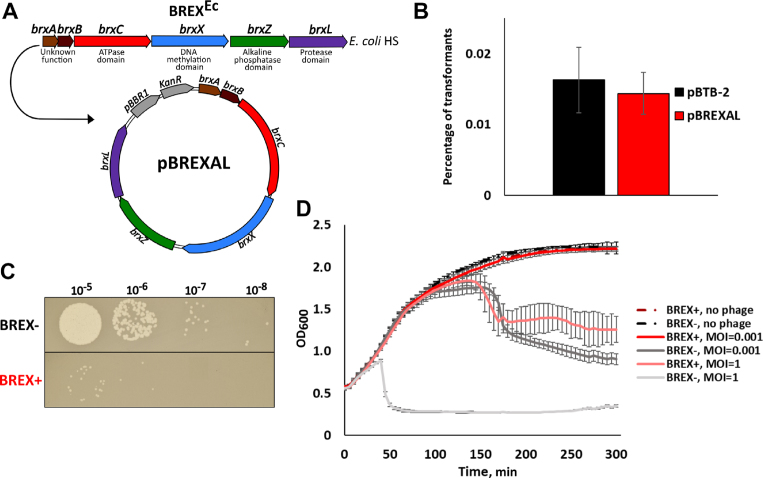Figure 1.
BREXEc protects cells from phage λ infection. (A) The BREX gene cluster from Escherichia coli HS is schematically shown; bioinformatically predicted putative functions of brx gene products are listed. The entire BREXEc cluster was cloned into the pBTB-2 vector to yield the pBREXAL plasmid. (B) Efficiency of transformation of the empty pBTB-2 vector and the pBREXAL plasmid into laboratory BW25113 E. coli to generate, correspondingly, BREX- and BREX+ cells. Mean values from three independent experiments are presented with standard deviations shown. P-value is 0.59. (C) Lawns formed by BREX+ and BREX- E. coli cells were spotted with indicated dilutions of phage λ lysate. Results of overnight growth at 37°C are shown. (D) Growth curves of BREX+ and BREX- E. coli cultures in the absence of infection, and during infection with λ phage at MOI of 0.001 and 1. Phage was added at t = 0. Each growth curve shows mean optical density values and standard deviations obtained from three independent experiments.

